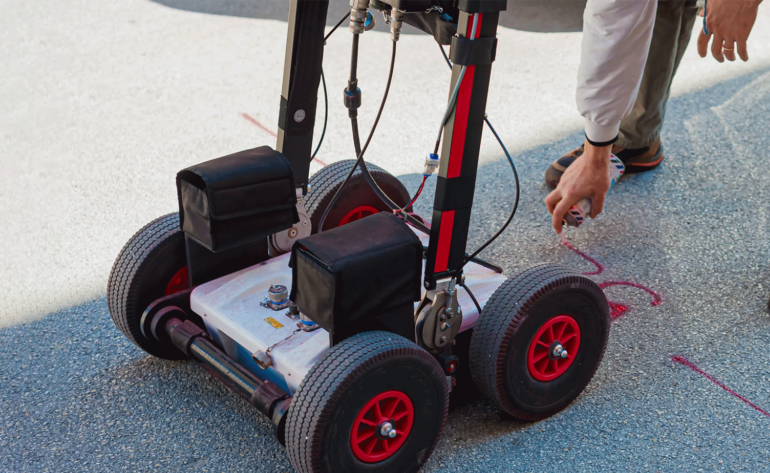When it comes to understanding what lies beneath the surface, Ground Penetrating Radar (GPR) is an invaluable tool. This advanced technology allows professionals to detect, map, and analyze underground features without the need for invasive digging. Whether for construction, utility mapping, archaeology, or environmental assessments, GPR services offer unparalleled accuracy and efficiency.
What is Ground Penetrating Radar (GPR)?
Ground Penetrating Radar (GPR) is a non-destructive geophysical method that uses radar pulses to image the subsurface. By sending high-frequency electromagnetic waves into the ground and analyzing the reflected signals, GPR can identify various underground materials, voids, and structures. This technology is widely used in multiple industries due to its accuracy and ability to provide real-time data.
Key Applications of GPR Services
1. Utility Detection and Mapping
Before beginning any excavation or construction project, it is crucial to locate underground utilities such as pipes, cables, and conduits. GPR provides a precise and efficient way to map these critical infrastructures, minimizing the risk of costly damages and service disruptions.
2. Concrete Scanning
For engineers and contractors, understanding the internal composition of concrete structures is essential. GPR helps detect rebar, post-tension cables, voids, and other anomalies within concrete slabs, ensuring safe and efficient structural modifications.
3. Environmental and Geological Assessments
GPR is widely used in environmental studies to detect underground storage tanks (USTs), contamination plumes, and soil variations. It also assists in geological assessments by identifying bedrock, water tables, and other subsurface features that influence construction and land development projects.
4. Archaeological and Forensic Investigations
Archaeologists and forensic experts rely on GPR to locate unmarked graves, buried artifacts, and historical structures. Its ability to detect subtle subsurface anomalies without disturbing the site makes it an indispensable tool in heritage preservation and crime scene investigations.
5. Roadway and Bridge Inspections
GPR plays a significant role in assessing the integrity of roadways, bridges, and pavements. By detecting voids, cracks, and material deterioration beneath the surface, transportation agencies can plan timely maintenance and repairs to enhance infrastructure safety.
Benefits of Using GPR Services
- Non-Destructive Testing (NDT): GPR provides underground insights without excavation, preserving site integrity.
- Real-Time Results: Data can be collected and analyzed on-site for immediate decision-making.
- High Precision: GPR delivers accurate mapping and detection of subsurface structures.
- Cost-Effective: Reduces the risk of unforeseen damages, saving time and money on repairs and project delays.
- Versatility: Works in various environments, including soil, concrete, asphalt, and ice.
Choosing the Right GPR Service Provider
Selecting a reliable GPR service provider ensures accurate data interpretation and optimal project outcomes. Look for companies with experienced professionals, state-of-the-art equipment, and a strong track record in diverse applications. Whether you need utility locating, structural assessment, or archaeological surveying, a qualified GPR expert can help you navigate the underground with confidence.
Final Thoughts
Ground Penetrating Radar (GPR) services are transforming the way industries explore and interact with the subsurface. With its ability to provide clear, detailed, and non-invasive insights, GPR is an essential tool for safer and more efficient site investigations. If you’re planning a project that involves underground detection, consider leveraging GPR technology to uncover the hidden world beneath with precision and confidence.
Need expert GPR services? Contact us today to learn how we can assist with your underground mapping and analysis needs!


